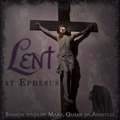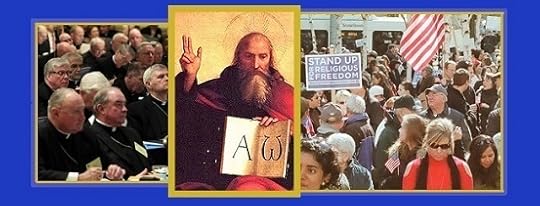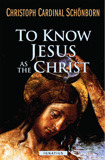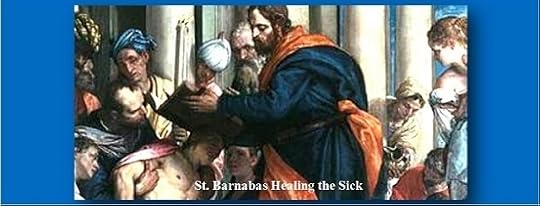Carl E. Olson's Blog, page 108
February 28, 2014
Available from Ignatius Press: "Lent at Ephesus" by Benedictines of Mary, Queen of Apostles
Now available:
by Benedictines of Mary, Queen of Apostles
The critically acclaimed Benedictines of Mary, who have received accolades from USA Today, NPR, ABC's Good Morning America and beyond, now return with their latest release, Lent at Ephesus. This compilation of poignant chants, intricate harmonies and rousing hymns of glory and redemption includes: "O Sacred Head Surrounded," made famous by Bach's oratorios, "All Glory Laud and Honor," the well known "Adoramus Te Christe" and the entrancing "Improperia" from the liturgy of Good Friday. Three original pieces are also featured among the generous 23 tracks. Let the vibrant purity of their monastic sound peacefully escort you through the penitential season of Lent.
Track Listing:
1. Jesus, My Love
2. Christus Factus Est
3. God of Mercy and Compassion
4. Hosanna To the Son Of David
5. Jesu Dulcis Amor Meus
6. Jesu Salvator Mundi
7. Improperia
8. On the Way of the Cross
9. Pueri Hebræorum
10. O Sacred Head Surrounded
11. Adoramus Te Christe (Ravanello)
12. Stabat Mater
13. Divine Physician
14. Vexilla Regis
15. Mother of Sorrows
16. Vere Languores Nostros
17. Tenebræ factæ sunt
18. O Come and Mourn
19. Adoramus Te Christe (Dubois)
20. Crux Fidelis
21. All Glory, Laud and Honor
22. Ave Regina Cælorum
23. My Mercy
Video:
February 27, 2014
Cardinal Müller: Most Catholics are clueless about marriage
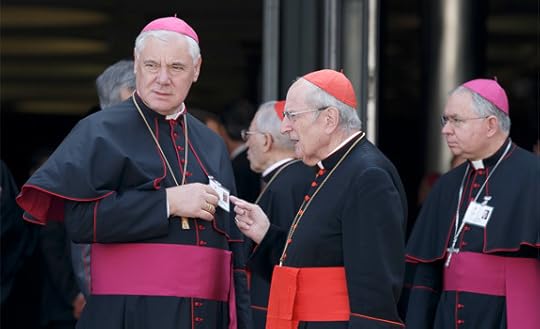
by Carl E. Olson | CWR blog
That is my paraphrase of this story, which contains some direct, blunt words from the head of the Congregation for the Doctrine of the Faith:
Just because many Catholics do not understand the Church’s teaching about the indissolubility of marriage, that does not mean the Church can change that teaching, said Cardinal Gerhard Müller, prefect of the Congregation for the Doctrine of the Faith.
Speaking to reporters on Tuesday — just days after the College of Cardinals held a two-day meeting to discuss the pastoral care of families — he said the widespread lack of understanding among Catholics about church doctrine was “lamentable.”
However, just because people don’t understand Jesus’ word doesn’t mean it can or should be changed, he said. “It would be paradoxical if the Church said, ‘Since not everyone knows the truth, the truth isn’t obligatory for the future.’”
Cardinal Müller than made this absolutely on-the-mark statement, one which goes to the heart of much of the confusion that exists among Catholics, as well as non-Catholics: "Doctrine and pastoral care are the same thing. Jesus Christ as pastor and Jesus Christ as teacher with his word are not two different people."
Exactly.
February 26, 2014
Francis, Faith, and False Assurances
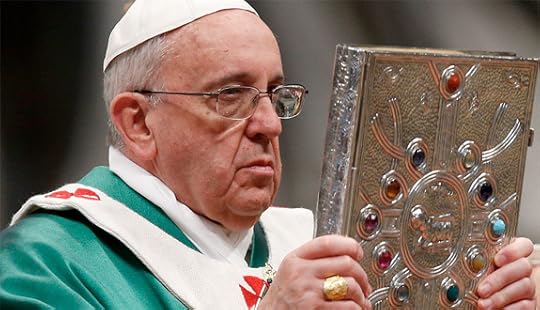
Francis, Faith, and False Assurances | Carl E. Olson | Editorial | Catholic World Report
There are a lot of people who are going to be surprised by how Catholic the Pope really is
Who, exactly, is reassuring whom? And about what?
Those were my thoughts upon reading David Gibson's spin-laden, cliché-soaked piece, “U.S. Cardinal Raymond Burke: Pope Francis opposes abortion and gay marriage” (Feb 21, 2014), for Religion News Service. Gibson's report was on an essay by Cardinal Burke, who is Prefect of the Sacred Tribunal of the Apostolic Signatura, titled, “The Pope’s radical call to the new evangelization”, for L'Osservatore Romano earlier the same day.
Gibson's first sentence immediately tries to stuff Cardinal Burkes' essay into a narrow, politicized framework:
As Pope Francis led the world’s cardinals in talks aimed at shifting the church’s emphasis from following rules to preaching mercy, a senior American cardinal took to the pages of the Vatican newspaper on Friday (Feb. 21) to reassure conservatives that Francis remains opposed to abortion and gay marriage.
Cardinal Burke, you see, isn't so much interested in reflecting upon the words and actions of Pope Francis as he is in gently patting the furrowed brows of fretting, simplistic Catholics who might wonder if the Holy Father is, in fact, on board with the Church's perennial teachings on issues of life, sexuality, and related matters. Or, more bluntly: Cardinal Burke is a politician first, and pastor second.
Gibson's piece is an outstanding example of bad Catholic journalism—both as the work of a Catholic and in its representation of the topic at hand. Two rhetorical tactics are immediately evident: the skewed portrayal of Cardinal Burke as a disgruntled, even angry, reactionary and the use of Gibson's favorite negative descriptive: “conservative”:
Cardinal Raymond Burke acknowledged that the pope has said the church “cannot insist only on issues related to abortion, gay marriage and the use of contraceptive methods.” But in his toughly worded column in L’Osservatore Romano, the former archbishop of St. Louis blasted those “whose hearts are hardened against the truth” for trying to twist Francis’ words to their own ends.
Burke, an outspoken conservative who has headed the Vatican’s highest court since 2008, said Francis in fact strongly backs the church’s teaching on those topics. He said the pope is simply trying to find ways to convince people to hear the church’s message despite the “galloping de-Christianization in the West.”
For those who rely only on Gibson's description, Burke's essay sounds like the shrill manifesto of a man desperate—the term “conservative unease” is used twice!—to spin the words of Francis to his own, well, “conservative” agenda. In fact, it is Gibson who is spinning—slyly, if not shrilly—the words of Burke. To take just one more blatant example:
What Is the Right to Religious Freedom?
What Is the Right to Religious Freedom? | Fr. Dylan Schrader | HPR
The most fundamental right in the area of religion is that which should be attributed to God, what we owe to God. God is absolutely sovereign.
Catholics of the United States are more than ever asserting a right to religious freedom, given by God and guaranteed by the Constitution of our country. Still, there is a grave danger that we may end up harming our cause by promoting, or seeming to promote, a false notion of the right to religious freedom. Pope Leo XIII wrote, “The world has heard enough of the so-called ‘rights of man.’ Let it hear something of the rights of God.” 1 It is only in the context of the rights of God that the rights of man have any firm foundation, and it is only on the basis of God’s sovereign rights that we can truly understand or defend our rights. 2
In its most basic sense, “right” means a thing that is attributed to someone by virtue of a title. The right (the objective right) is the thing that is owed, as in, “This paycheck is my right.” Since a person’s right is owed to him, he can demand it. Others, in turn, are bound by justice either to respect his right if he possesses it (e.g., by not robbing him) or to render it to him if they have deprived him of it (e.g., by paying back a debt).
More often, it seems that we use “right” to refer to the power to demand what is owed (the subjective right), as in, “I have a right to my paycheck.” The power to demand what is owed, however, is logically subsequent to the fact of a thing’s being owed. Thus, the subjective right, the power to demand what is owed, derives from the objective right, the thing that is attributed, and therefore, owed to someone by virtue of a title. The distinction between the objective right (the object that is owed) and the subjective right (the subject’s power to demand what is owed) is important for understanding the relationship between rights and debts. 3
The most fundamental right in the area of religion is that which should be attributed to God, what we owe to God. God is absolutely sovereign.
February 24, 2014
New: "To Know Jesus As the Christ" by Christoph Cardinal Schoenborn
Now available from Ignatius Press:
by Christoph Cardinal Schoenborn
• Also available as an Electronic Book Download
The monthly "catechesis" in the Cathedral of St. Stephen by the Archbishop of Vienna, Cardinal Christoph Schoenborn, have become an institution among many people in Austria. In simple but beautiful words and vibrant images presented by the Cardinal, the doctrine and the practice of the faith are fruitfully brought together.
This book contains a cycle of catechesis, or teachings on the Christian faith, which pose fundamental questions with respect to the confession of the faith: How can God be one and triune? How can He be all powerful and at the same time permit evil? Is our life free or pre-determined? How is Christianity different from other religions? How are we to understand the signs and miracles of Jesus? Why must we believe in the Resurrection of Jesus and hope in our own life after death?
Cardinal Schoenborn explores these and many other important questions about the Christian faith, and especially about the life and teachings of Jesus Christ, in his usual lucid and compelling style. He leads us to a deeper realization of who Christ is, what his saving mission was, and how we can know and love Him in a personal and profound way.
An inspiring and practical work by a great churchman about the eternal importance of the Christian faith, and the life and teachings of Jesus Christ, and how it is crucial for our everyday life.
"Catechesis is something different from a theological discourse. Catechesis is actually a way, and we are invited to set out on such a catechetical way. For catechesis is very closely connected with the mission of Jesus himself. It is actually the direct translation of his mission, which he gave to the apostles at the end of his life: ‘All authority in heaven and on earth has been given to me. Go therefore and make disciples of all nations.' "
- Cardinal Christoph Schoenborn
Christoph Cardinal Schoenborn, the Archbishop of Vienna, is a highly respected spiritual teacher and writer. He has written numerous books including Jesus, the Divine Physician, Chance or Purpose?, Behold, God's Son, and Living the Catechism of the Catholic Church.
God Gave Burdens, Also Shoulders: A Yiddish Proverb
God Gave Burdens, Also Shoulders: A Yiddish Proverb | Sister Joseph Andrew Bogdanowicz, O.P. | HPR
In all of our lives, there are times when encouragement makes or breaks our stamina. Even when all is well, we know a deeper happiness if our efforts find appreciation.
Recently, I came across a publication of the Mayo Clinic and was surprised to find therein an article referring to a dear friend, Tim Ruettiger, with whom I had taught in an Illinois high school some years ago. I had heard the story but was elated that this prestigious clinic also thought it newsworthy. Why did they? It seems doctors are now validating the amazing healing properties of virtues like “encouragement” and “consolation.”
The story focused on Ron, a fourteen-year-old, four-feet-six-inch lad who had enrolled in Tim’s physical education class. Coach Rudy (brother of “Rudy” of the 1993 American sports film) treated this young man with the same respect and expectations as all the other students, though Ron had a rare genetic cancer. Throughout Ron’s teens, the effects of the disease would increase but Coach never allowed the young man to say “I can’t”; rather, his faith completed all such reasoning with “You will!” Coach joined Ron in shooting hoops (kneeling to allow for differences in physical abilities) even as he challenged him to play sports to the best of his ability. It was Coach’s example that encouraged the other students to pick Ron for teams, with pride.
Years passed, and one evening in August of 2013, Coach received a phone call from the Mayo Clinic informing him of the approaching death of a young man whose mantra had become “Coach Rudy would be proud of me.” Hearing about Ron’s nine episodes of bone cancer and his multiple amputations, Rudy immediately flew to Mayo. His coaching wasn’t over; encouragement was needed for his friend’s last challenge—to die well. Coach found himself once again kneeling beside his student, this time in deepest prayer.
On the Feast of Christ the King (November 24, 2013), our Holy Father, Pope Francis, issued his first Apostolic Exhortation, Evangelii Gaudium (The Joy of the Gospel). In it he writes: “To be evangelizers of souls, we need to develop a spiritual taste for being close to people’s lives and to discover that this is itself a source of greater joy. Mission is at once a passion for Jesus and a passion for his people” (§268). It is this passion which moves us to “spill over and refresh others” (§272) through the gift of encouragement.
In all of our lives, there are times when encouragement makes or breaks our stamina.
The Oblates of the Virgin Mary: For Our Lord and Our Lady
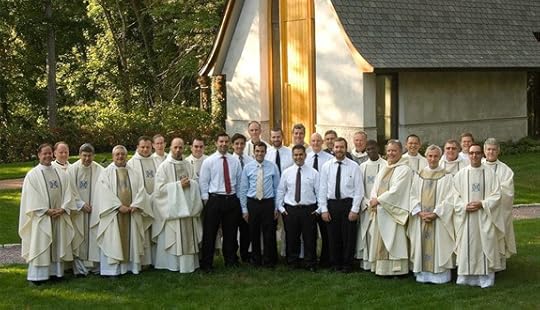
Oblates of the Virgin Mary and seminarians at St Joseph's Retreat House, Milton, MA.
The Oblates of the Virgin Mary: For Our Lord and Our Lady | Jim Graves | CWR
Fr. Jeremy Paulin, OMV, discusses the history of the Oblates, his journey into the order, and the challenges and blessing of religious life
The Oblates of the Virgin Mary (www.omvusa.org) are a small, but growing community. The order was founded by Venerable Bruno Lanteri (1759-1830) in Northern Italy in 1826, and today has 200 members in nine countries, including the United States. The Oblates today are engaged in a variety of apostolates, including teaching, offering parish missions and retreats, and spiritual support of diocesan clergy. The Oblates are also known for their orthodoxy and fidelity to the Holy Father and teaching authority of the Church.
The Oblates also have a community for women, the Oblate Sisters of the Virgin Mary of Fatima, which is located outside the United States.
Fr. Jeremy Paulin joined Oblates in 1998, and was ordained a priest in 2006. Today, he serves as vocations director. He recently spoke to CWR.
CWR: Please tell us about your founder, Father Lanteri.
Fr. Jeremy Paulin: From his youth, Father Lanteri had a great love for Our Lord and Our Lady. He also had a great love for the Church, the papacy and the Magisterium.
He entered the Carthusians, but found it wasn’t for him. So, he became a diocesan priest. He met a Jesuit priest [Fr. Nicolas Joseph Albert von Diessbach], who taught him the Spiritual Exercises of St. Ignatius of Loyola. He discovered that doing the Spiritual Exercises is a way for a person to quickly become a great saint.
Father Lanteri was placed under house-arrest by Napoleon for three years—he was charged with smuggling documents to the Pope—and it gave him the opportunity to advance in prayer.
Father Lanteri led retreats and parish missions, and provided spiritual direction. He had a great love for the mercy of God, and had a desire to make it available to all through the Sacrament of Confession. This was during a period of the late 1700s and early 1800s, when the sacrament was not being celebrated as often as it should.
Other priests who shared his interest in the Spiritual Exercises and providing regular access to the sacrament of confession joined him. He founded the Oblates of the Virgin Mary.
CWR: What is an Oblate?
February 22, 2014
The Challenge of Perfection, The Call to Holiness
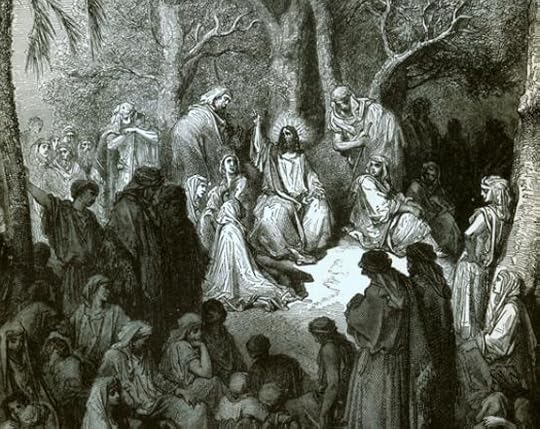
"Sermon on the Mount" by Gustave Dore
A Scriptural Reflection on the Readings for Sunday, February 23, 2014 | Carl E. Olson
Readings:
• Lev 19:1-2, 17-18
• Psa 103:1-2, 3-4, 8, 10, 12-13
• 1 Cor 3:16-33
• Matt 5:38-48
“To be perfect,” the priest said in concluding his homily, “means that you should be the best policeman, or fireman, or Indian chief, that you can be.” I sat, rather perplexed, in a parish I occasionally visited for daily Mass. However well intentioned the priest was in his remarks, it seemed to me that he was shying away from the direct and difficult words in the Gospel reading: “So be perfect, just as your heavenly Father is perfect.”
Those words, without a doubt, are among the most challenging in the entire Bible, and yet I suspect they might also be among the most avoided and ignored. A more well-known and oft-quoted statement, which opens today’s Gospel reading from the Sermon on the Mount, is this: “When someone strikes you on your right check, turn the other one as well.” We’ve all heard many homilies about turning the other cheek, and it is undoubtedly a challenging thing to consider, let alone put into practice.
The same is also true of the other commands given by Jesus in this section: to give one’s cloak (an outer garment) to the man who sues for one’s tunic (the inner garment); to carry a load a second mile for the man—likely a Roman soldier, in the immediate context—who demands a mile of service; to love and pray for one’s enemies and persecutors. Each of these leads up to the command to be perfect, which is the climax and summation of this first part of the great Sermon.
What, then, to make of it? Monsignor Ronald Knox, in a sermon titled, “Our Retaliation”, provided a basic insight that is most helpful, saying that “the difference between the old law and the new law is that the old law issues a series of commandments which have got to be obeyed, whereas the new law instills into Man’s heart a spirit of active charity which out to make commandments unnecessary for him.” The old law was given to a people in need of teaching about the proper limits of justice and retaliation, summed up in the saying, “An eye for an eye and a tooth for a tooth.” So a foundational principle of morality is learning where the lines are drawn, of learning what is sinful and contrary to the good.
But even the old law pointed to something much greater, as we hear in today’s first reading: “Be holy, for I, the Lord, your God, am holy.” In the Sermon on the Mount, Jesus goes to the essential heart of the old law and reveals it afresh and completed, possible only through his authority and interpretation. Yet it goes beyond even that, for the Son of God lived the new law to perfection. He did not resist the betrayal of an evil man, he turned the other cheek when struck by soldiers, he was violently stripped of his garments, and he prayed for his persecutors as he died: “Father, forgive them; for they know not what they do” (Lk 23:34).
Vatican II’s “Dogmatic Constitution on the Church” reflecting at length on the “universal call to holiness”, says, “The Lord Jesus, the divine Teacher and Model of all perfection, preached holiness of life to each and everyone of His disciples of every condition. He Himself stands as the author and consumator of this holiness of life: ‘Be you therefore perfect, even as your heavenly Father is perfect’.” It then remarks that those who are justified in Christ through baptism “truly become sons of God and sharers in the divine nature.”
The Greek word for “perfect” is “teleios”, which means full and complete, and refers to moral perfection. It is, in other words, a call to holiness. God, who is all-holy, has created man so he can share—by the gift of grace—in his perfect, holy, and divine life. Our temporal vocations as policemen and such are important, but our everlasting vocation is to be a complete child of God.
(This "Opening the Word" column originally appeared in the February 20, 2011, issue of Our Sunday Visitor newspaper.)
February 21, 2014
Praise for the children's book, "Our Holy Father, the Pope" (Ignatius/Magnificat)
From Dr. Jeff Mirus at Catholic Culture:
Magnificat and Ignatius Press have teamed up to publish a striking children’s book entitled Our Holy Father, the Pope. As the subtitle indicates, it briefly covers “the Papacy from Saint Peter to the Present”. The text is by Don R. Caffery, a father who decided to write this book because he could not find anything along the same lines for use with his own children. Emmanuel Beudesson, a French artist, was chosen to do the illustrations.
The oversize book—in the classic children’s size of 8.5” x 12”—features full-page illustrations (or sometimes page-plus) next to which the text is presented, or sometimes superimposed. The text itself is Scripturally rich, and the case for both the Divine institution and immediate historicity of the papacy is well-made, along with the special powers and responsibilities intrinsic to it. ...
As should be expected, Our Holy Father, the Pope expends the majority of its pages in covering Our Lord’s establishment of Peter’s role in the Church followed by a brief account of Peter as the first pope, up to his crucifixion. It then gives a sense of the long history of the papacy simply by highlighting four particular popes, Clement I (who has substantial apologetical value for the initial narrative), Leo the Great, Pius X (because he made communion much more widely available, particularly to children), and John Paul II. The book concludes with a consideration of the pope’s duties, where he lives, who helps him, and how new popes are chosen. The concluding section recommends praying for the Holy Father.
Mirus concludes: "Our Holy Father, the Pope is quite well done. It makes a fine addition to home, school and parish libraries for children." Read his entire review at www.CatholicCulture.org.
About the book:
Our Holy Father, the Pope: The Papacy from Saint Peter to the Present
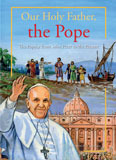
by Don R. Caffery and illustrated by Emmanuel Beaudesson
Who was the first pope? Who is the pope today? What does he do? And why do we need one anyway? The answers to these questions and more can be found in this beautifully illustrated book for children. Our Holy Father, the Pope takes us back to the time of Jesus so that we can learn about the origins and role of the Papacy.
The storybook format begins with the Gospels: Jesus calling Simon, Jesus renaming him Peter, meaning "rock", and giving him the keys to the kingdom, and so on. It follows Peter as Jesus suffers, dies, and rises from the dead for all mankind. The descent of the Holy Spirit, the birth of the Church, and the death of Peter himself for the sake of Jesus also are described.
The Church carries on with a new leader to replace Peter, as she has down through the centuries to our own day. As children will learn from this book, although the Church has adapted to the times, the tasks of our modern popes are not that different from those of Peter.
The book includes brief biographies of some famous popes, a list of all the popes from Peter to the present, and a bibliography.
Includes beautiful and inspiring illustrations by renowned French illustrator Emmanuel Beaudesson. See sample pictures below:
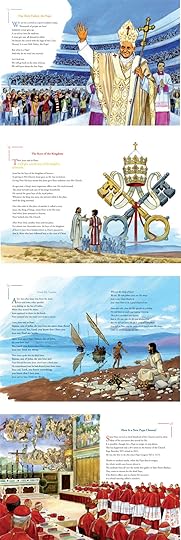
Theology Online with Fr. Joseph Fessio for College Credit - Enroll now!
Theology Online w/Fr. Joseph Fessio for College Credit - Enroll now!

The Ignatius-Angelicum Liberal Studies Program and Holy Apostles College & Seminary are pleased to announce that LSP online students may apply any or all of their American Council on Education (ACE CREDIT) recommended credits (60 total) towards their BA degree at Holy Apostles, including towards the new Holy Apostles Great Books major. The American Council on Education's College Credit Recommendation Service (ACE CREDIT) has recommended the LSP Great Books Program online for 48 college credits (6 per semester/8 semesters) and the LSP Theology Online courses (lectures by Fr. Joseph Fessio for 12 college credits 4 courses - 3 credits each) - that's a total of 60 hours, which is 2 years of college credit (1/2 of a typical BA degree) completed before you enter college.
Holy Apostles College & Seminary campus is located in historic Cromwell, Connecticut, easy driving distance for a day trip to either New York City or Boston and welcomes distance learning students, lay commuter students, as well as seminarians. Besides the on-campus undergraduate, graduate, and seminary degrees in philosophy & theology offered on-campus, 18 courses are scheduled to be offered through the Holy Apostles Distance online Learning program, undergraduate level, for the Spring 2014 semester. Graduate courses may be used for credit toward the M.A., Post Master’s Certificate in Theology, and M.Div. programs, as well as for Certificate programs. Holy Apostles College & Seminary is a regionally accredited, co-educational Catholic college for lay and clerical students.
Contact: 719.930.7549 or info@angelicum.net
Learn more about the Liberal Studies Program at:
http://angelicum.net/liberal-studies-program-faq/
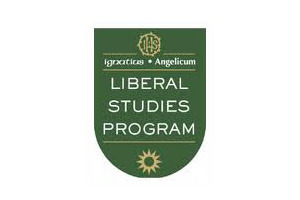
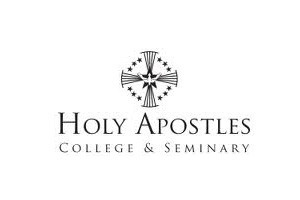

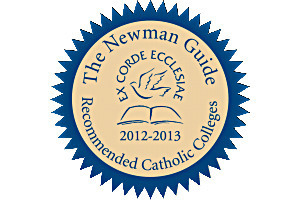



Forward to Friend
Copyright © 2014 Ignatius Press, All rights reserved.
Carl E. Olson's Blog
- Carl E. Olson's profile
- 20 followers


